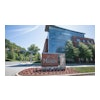Coppin State, Hampton Named Among Top Wireless Schools
Ronald Roach
Coppin State University and Hampton University are the only historically Black institutions named among America’s Top 50 colleges for wireless Internet access, according to a survey released last month by Intel Corp. and the Center for Digital Education.
Coppin State, located in Baltimore, held the 19th place in the rankings. Hampton, which recently unveiled wireless Internet access throughout campus, was ranked 39th.
Over the past several years, wireless-enabled laptops have become a necessity for many college students, allowing them to access the Internet from nearly any location on campus. The “Most Unwired” survey was based on the percentage of each campus that has wireless accessibility, the number of undergraduate students and the computer-to-student ratio for each school. The study examined schools with more than 1,000 students.
Recently honored by the EDUCAUSE organization for information technology innovation, Coppin State boasts more than 40 active smart classrooms, the Tegrity digital note taking program, and a new mobile Web site among its notable technological strides. (see Diverse, Sept. 8) Coppin’s selection marks the first time a school in Maryland has been ranked as one of the Most Unwired schools, according to school officials.
According to Hampton officials, the university installed more than 300 wireless “access points” across campus this summer to provide wireless Internet access to students in the fall. More than 95 percent of HU students bring some type of computer with them to campus, says Dr. Debra Saunders White, vice-president for technology at Hampton. White predicts the new wireless network will lead more students to abandon desktop computers in favor of laptops.
“We have a president in Dr. William R. Harvey who has made a strategic investment in information technology, technology which prepares our community of scholars to be competitive in a global society. Wireless technology is just one of those tools,” White says. n
© Copyright 2005 by DiverseEducation.com


















